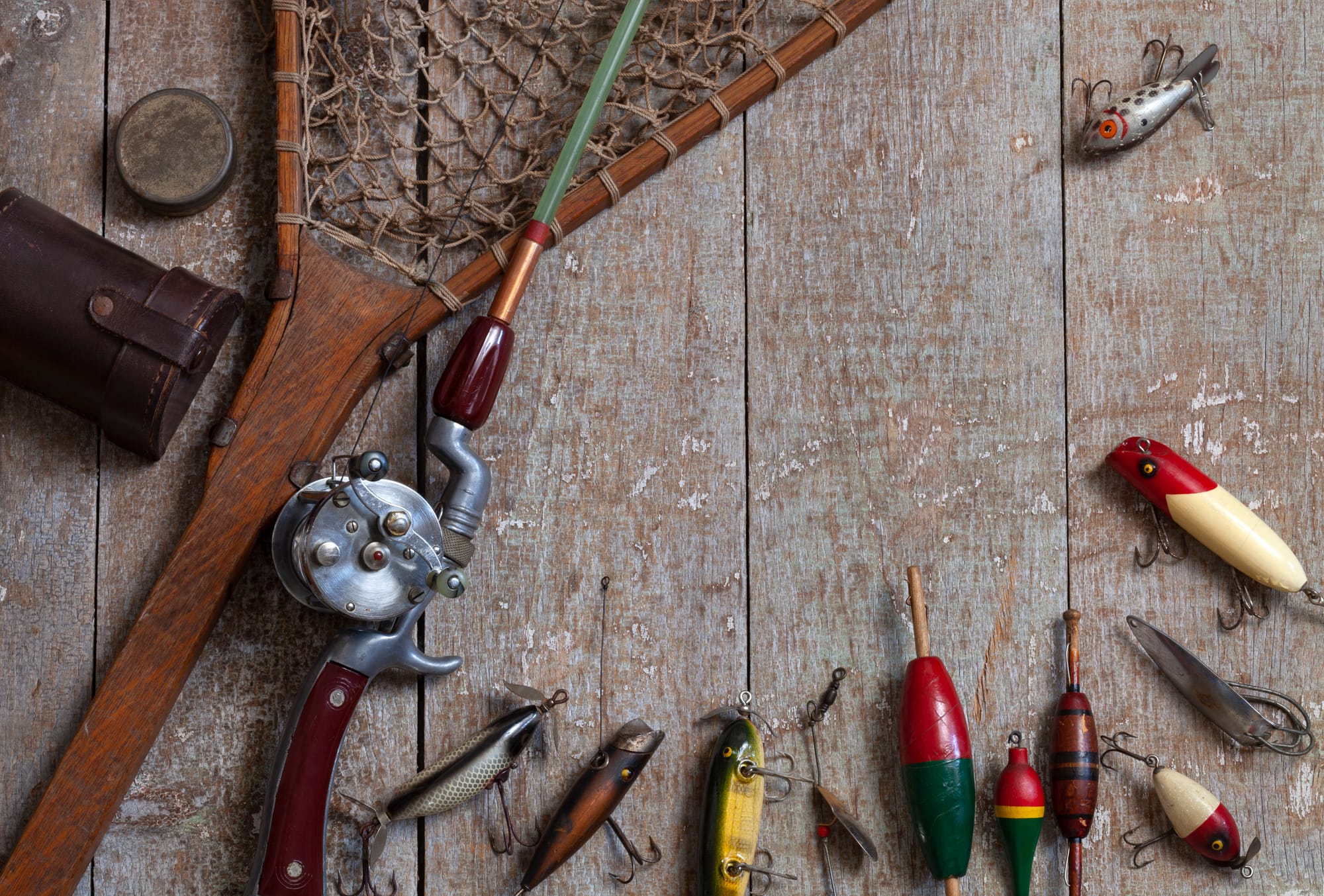Exploring Vintage Fishing Lures

Exploring Vintage Fishing Lures: A Collector's and Angler's Dream
Vintage fishing lures have long captured the imagination of anglers, collectors, and history enthusiasts alike. These beautiful pieces of craftsmanship not only represent a bygone era of fishing but also tell the story of an evolving sport. From intricately designed wooden lures to early metal spoons, there's a wealth of fascinating history and beauty to uncover. Whether you're new to the world of vintage lures or a long-time collector, this guide explores essential tips and key points for diving into this rewarding hobby.
1. Understand the Appeal of Vintage Fishing Lures
- Historical Significance: Vintage lures date back to a time when fishing depended more on skill than technology. These lures represent the evolution of angling techniques, materials, and designs.
- Craftsmanship: Most vintage lures were handmade, especially those crafted in the late 19th and early 20th centuries. The attention to detail and artistry make them miniature works of art deserving appreciation.
- Nostalgia: For many, vintage fishing lures stir memories of simpler times, whether through their connection to family fishing trips or seeing cherished brands from childhood.
- Collector's Value: Lures can be an excellent investment; some highly sought-after items are worth hundreds or even thousands of dollars.
2. Identify Popular Types of Vintage Fishing Lures
- Wooden Lures: Some of the oldest and most collectible lures are made from wood. Popular during the early 20th century, wooden lures often featured hand-painted details that made them highly prized among collectors.
- Metal Spoons: Invented in the mid-19th century, metal spoon lures imitate the movement of small fish. Companies like Eppinger and Pflueger became famous for their early designs.
- Plastic Lures: Introduced in the 1930s and 1940s, molded plastic lures revolutionized fishing. Companies such as Creek Chub and Heddon launched iconic designs still revered today.
- Fly Fishing Lures: Vintage fly lures, especially handmade ones, are a separate category of beauty. Look for ties created from natural materials like feathers and fur.
3. Research Renowned Brands and Manufacturers
Understanding the history of famous manufacturers is crucial for vintage lure enthusiasts. Here are some legendary brands worth exploring:
- Heddon: Heddon is one of the most recognizable names in fishing lures. Founded in the late 19th century, the company is known for its wooden lures like the “Dowagiac Minnow.”
- Creek Chub: Another iconic name, Creek Chub is famous for its high-quality lures such as the “Pikie Minnow.” Their attention to detail made their products instantly recognizable.
- Pflueger: Known originally for manufacturing metal spoons, Pflueger also developed innovative designs like the “Mustang Minnow.”
- Rapala: A Finnish company with roots in the 1930s, Rapala introduced timeless balsa wood lures like the “Original Floater.”
- South Bend: South Bend turned heads with affordable, effective designs like the “Bass-Oreno.” They remain a collector’s favorite today.
4. Know How to Identify Authentic Vintage Lures
Identifying authentic vintage lures can be tricky for beginners but becomes easier with practice. Here are some key points to consider:
- Materials: Older wooden lures will typically show signs of age, such as cracked paint or hardware wear. Metal lures can develop patina over time, giving them a distinctive look.
- Brand Stamps: Many manufacturers engraved or stamped their brand names on lures. Look for markings like “Heddon,” “Creek Chub,” or “Pflueger” as an indicator of authenticity.
- Packaging: Original boxes or cards can offer clues about the lure’s age and maker. Collector-grade pieces often include accompanying packaging.
- Reproductions: Beware of reproduction lures that mimic vintage designs. Familiarize yourself with original designs and construction techniques to avoid replicas.
- Research: Use reference books, collector forums, and online resources to verify a lure’s authenticity, age, and origins.
5. Learn How to Preserve and Display Your Collection
- Storage: Store vintage lures in a dry, cool environment. Humidity and exposure to sunlight can damage wooden or painted lures over time.
- Avoid Overhandling: Handle lures with care to avoid chipping paint or tarnishing the hardware.
- Cleaning: Use a soft cloth to wipe away dirt or grime. Be careful not to scrub away original paint or patina, as these features affect the lure’s value.
- Display Cases: Investing in a display case can protect your collection while showcasing it beautifully. Some cases even have UV-protective glass to prevent fading.
- Document Your Collection: Keep a catalog of your lures, including information about their manufacturer, year, and condition. This can help track your collection and make it easier to sell or trade in the future.
6. Invest Time in the Community
One of the joys of collecting vintage fishing lures is becoming part of an enthusiastic community. Fellow collectors and anglers are a wealth of knowledge and can provide tips for finding rare pieces, identifying authentic lures, and learning about their history. Here are some avenues to connect:
- Collector Groups: Many online communities exist on forums, social media platforms, and websites dedicated to fishing enthusiasts and lure collectors.
- Antique Fishing Tackle Shows: Attend tackle shows and swaps to meet other enthusiasts and possibly discover rare finds.
- Books and Publications: Invest in collector’s guides and hobbyist magazines. These resources provide detailed overviews of manufacturers, lure types, and tips on effective collecting.
- Social Media: Platforms like Facebook, Instagram, and Reddit host active groups of vintage lure enthusiasts who share photos, advice, and marketplace postings.
7. Start Small and Build Your Collection Over Time
- Set a Budget: Vintage fishing lures can range from $10 to thousands of dollars. Determine what you’re willing to spend and stick to it, focusing on gradual collection-building.
- Focus on Themes: Instead of collecting randomly, consider focusing on a particular brand, era, or type of lure. This creates a more cohesive and meaningful collection.
- Don’t Overlook Bargains: Garage sales, thrift stores, and flea markets can be treasure troves for vintage lures. Many people don’t realize the value of old fishing gear, offering an opportunity to find hidden gems.
- Trade and Sell: Over time, you may find duplicates or lures that don’t fit your collection. Trading or selling these items can help you acquire pieces you truly want.
8. Explore the Fascinating History of Fishing Lures
Diving into the stories behind vintage lures adds depth to your hobby. Did you know that some of the earliest lures date back to the Native Americans, who used feathers and bones to attract fish? Or that Heddon’s idea for a topwater lure came from watching fish strike at stray sticks floating in the water? Learning these histories can deepen your appreciation and make each piece in your collection come alive.
9. Combine Collecting with Angling
While many collectors keep vintage lures in pristine condition as display items, some prefer to use their finds. Testing out vintage lures on the water provides a unique fishing experience and offers insight into how anglers of the past caught fish. That said, exercise caution, as using rare or delicate lures could result in damage or loss.
10. Embrace the Joy of Discovery
Perhaps the greatest appeal of vintage fishing lures lies in the thrill of the hunt. Each flea market find or auction win is a step closer to discovering something remarkable. The process of uncovering, identifying, and learning about old lures is incredibly rewarding and continually provides new opportunities for exploration.
In conclusion, vintage fishing lures represent more than just tools for catching fish—they are rich pieces of history, art, and nostalgia. By following these tips and connecting with the passionate collector community, you'll develop an even greater appreciation for these timeless treasures. Whether you're looking to start a collection, enjoy the history, or relive classic fishing moments, vintage lures will undoubtedly hook you on this fulfilling pursuit.


